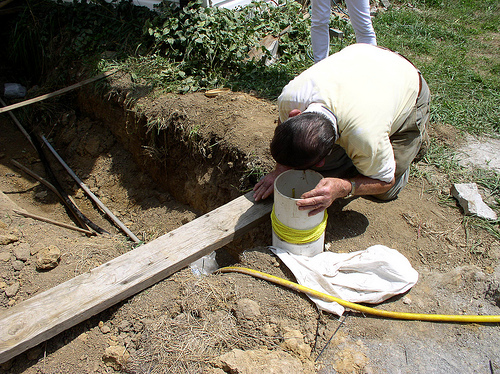Conservation-minded Kentucky Farmer Saves Money & Improves the Environment
Just outside Lexington, Ky., you can find Peaceful Valley Farm, the longtime Kiser family home. Joe Kiser bought the 162-acre farm in 1965. The farm has thrived since then—even during the current severe drought—thanks to Kiser’s conservation-minded land management.
Kiser operated the farm, which includes cattle and a large garden, for many years using water from a nearby stream.
With technical assistance from USDA’s Natural Resources Conservation Service (NRCS), Kiser dug a well in the mid-‘90s, but continued to use the stream for supplemental water as needed. But when the stream ran dry in this summer’s drought, Kiser struggled to keep his livestock and garden watered and had to rely partly on city water.
With the 54 head of cattle and over 40 calves, Kiser estimates he needs about 1,500 gallons of water a day. Using city water cost him hundreds of dollars each month, which he could not sustain.
Luckily, with geological advice from NRCS, Kiser began drilling this summer and found water 25 feet down. That well is supplying water to his garden and his cattle, when they come in from the back pastures. The water is also piped into the family home. Once testing is complete, Kiser hopes to be completely independent of the city water supply.

Joe Kiser listening for water pumping from the well.
Water quantity was not Kiser’s only concern on his farm. In addition to running his farm, Kiser also is the founder and CEO of Fayette Electrical Service, Inc.—a small electrical business—so he knows quite a bit about energy consumption. He studied the possibilities of solar energy and decided earlier this summer to install solar panels on one of his barns. The savings have been immediate.
In June, Kiser banked over 300 kilowatts of energy, which means he is powering his operation completely from the solar panels. He estimates that the panels will pay for themselves in about eight years.
So with some imagination and a little help from NRCS, Kiser has the water he needs, and he’s reducing carbon emissions, saving money and storing energy for the dark, cloudy winter months ahead.
Follow NRCS on Twitter.
Check out other conservation-related stories on the USDA blog.
